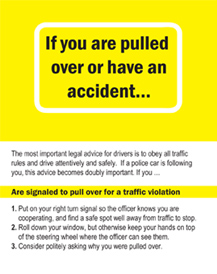Case evaluation checklist
The following checklist covers the causation, liability and collection aspects of a slip and fall case. An experienced personal injury lawyer will often review a checklist like this before he or she takes any action in a slip and fall case. This checklist refers to the person who filed the lawsuit as the “plaintiff,” and the person/entity sued as the “defendant.”
Case Evaluation Checklist
1. When did the slip and fall accident or incident occur?
2. Has the statute of limitations run on any possible causes of action?
3. Who was the owner of the premises?
4. Who was in control of the premises?
5. Who was maintaining the premises?
6. In what area of the premises was the plaintiff injured (area under control of owner, common area, other)?
7. What was the plaintiff’s status (e.g., invitee, social guest, trespasser)?
8. If the plaintiff had been on the premises before, how many times and for what purpose(s)?
9. What was the alleged cause of the plaintiff’s injury (e.g. defective condition of premises, foreign substance or object, slippery floor)?
10. Is the alleged cause of the accident something about which the defendant was aware?
11. Were any warnings posted with respect to the alleged defect or problem?
12. Was the plaintiff aware of the alleged defect or problem?
13. Was the problem ever communicated to the plaintiff by the defendant or by one of the defendant’s agents or employees?
14. What if anything did plaintiff do if he was aware of the problem?
15. Is an assumption of the risk defense available to the defendant?
16. Does the defendant have a defense of either contributory negligence or comparative negligence?
17. Are there any other parties, other than the owner/occupier of the premises, who are potential defendants; e.g., (a) any independent contractors/ maintenance men who repair or maintain the premises; (b) the architects/ engineers who designed the premises; or (c) the manufacturers of products used on the surfaces of the premises (cement, glass, carpet, wax)?
18. What kinds of witnesses will the defendant and his agents or employees make?
19. Are there lay witnesses available to testify for either the plaintiff or the defendant?
Note: In order to avoid assumption of risk and potential contributory/comparative negligence defenses, experienced personal injury counsel generally avoid relying solely on the injured plaintiff’s testimony to document the defect or condition causing the slip and fall, and instead rely on tangible evidence and outside witness testimony.
For example, in a slip and fall case involving ice and snow, a personal injury attorney would turn to the following potential sources:
a. Witness statements as to accumulation of ice and snow and condition of any walkway or surface.
b. Observation by emergency personnel or paramedics who arrived at the scene.
c. Incident reports filed by landowner or occupier or any agents.
d. Inspection reports prepared by the landowner or any of its agents.
e. Any invoices paid by the landowner or any of its agents for ice and snow removal or treatment of sidewalks or walkways.
f. Any official weather reports or local newspaper accounts regarding precipitation, snow, ice and freezing conditions.
g. Photographs and other visual evidence showing the icy and snowy conditions.
20. What is the initial value assigned to the slip and fall case?
21. What is the likelihood of recovery?
22. What is the likelihood of collecting a money judgment?



